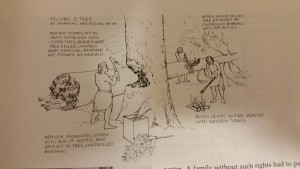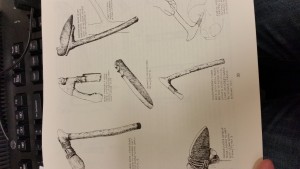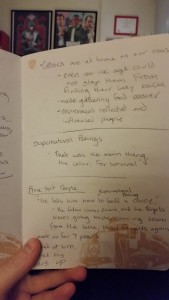It has been a very busy week so far, filled with quite a lot of new information, new ideas, and a whole lot of new positions to consider when working in the educational field. But so far the biggest change has been working outside of the classroom in a more office-space sort of position.
Most mornings during my practicum I was up a 6:20 in order to catch the 7AM bus up to my practicum school in time for 8AM. I would often be up till 10 or 11 the night before as I usually didn’t leave my school till about 5 or 6, and would still have lots of prep work and lesson planning to do for the next day. At times this would feel pretty overwhelming, but I would manage to get through it simply by planning as far ahead as possible and coming up with several lesson plans during the weekend so I wouldn’t be overburdened during the week. Being part of the Ultimate Frisbee team (helping to coach) ate up a lot of hours after school, volunteering with other programs, and meeting with my SAs and FA made it so I would often be “on” from 8AM to 10PM every day working with the school in some fashion or another. This isn’t to say it was hard work, or not enjoyable, just that in comparison to my position at the gallery for the last week it was probably the hardest two and bit months of my life.
Here at the gallery I get to wake up around 8AM and still have an hour to myself to make breakfast, enjoy my coffee, and prepare for the day in a much more enjoyable manner. I get to sleep at a normal hour, and rarely take more than an hour of work home with me. I even got to enjoy my weekend! I didn’t have marking, unit planning, lesson planning, or reflections to send to my FA and SAs. All I had to do was some reading, enjoyed on my balcony in the sun, and a few notes to help me figure out some of the work I had to finish with the gallery. I met up with friends for the first time in two months, I enjoyed the sunshine in the afternoon, and even got around to visiting the Capilano Suspension Bridge Sunday afternoon.
Working in an office is a strange feeling however, as my job choices and experiences up until this point have been either customer service oriented, or factory work, or in front of a classroom facilitating learning. I’ve mentioned before this strange transition, but I should reiterate how it is a benefit to myself and my practice as well. So far I’ve been to several meetings, walked around interacting with the material at the gallery (sometimes in the classroom its hard to interact with the material because you have so little time), and even enjoyed a couple of tours to gain further insight into my contribution for the gallery. Collaboration really seems to be the major theme at this gallery. Working together, discussion what is going on in each department (marketing, accounting, curating, fundraising, etc.), and having face to face time with each other seems to help make the gallery run incredibly smoothly. We’ve had artists come in, fundraising people, even two prominent foundations based in Vancouver. Seeing this other side of education (relatively speaking) has helped me better understand how I might encourage field trips or field experience in my classrooms by utilizing spaces like the gallery for educative purposes. It has also helped me better understand the idea of collaboration. In my practicum I usually only worked with my SAs to better my skills and work on my content, and rarely interacted with other teachers even in the same department (social studies). Although this didn’t harm my practicum, I feel as though if I had made a better effort to really share resources and information with other teachers I could have bettered myself in a stronger and faster way. Here at the gallery it seems like that’s what helps everyone work so well together. So hopefully taking this lesson forward with me will result in better work habits such as collaboration, meetings, and face to face interactions with colleagues and friends.
Other than that, so far the CFE placement has helped me in my own education by providing me with ample content and information toward indigenous history, culture, and social justice. My own research I’ve been undertaking to develop programs for the gallery has helped me gain even more knowledge than I had before on indigenous issues ranging from spirituality, cultural practices, historical influence, and even sustainability and environmental issues. So far it has been an incredible pleasure to work here, not only for my own benefit, but for the benefit of my future practice to help students understand better the issues surrounding indigenous people, and environmental issues.




